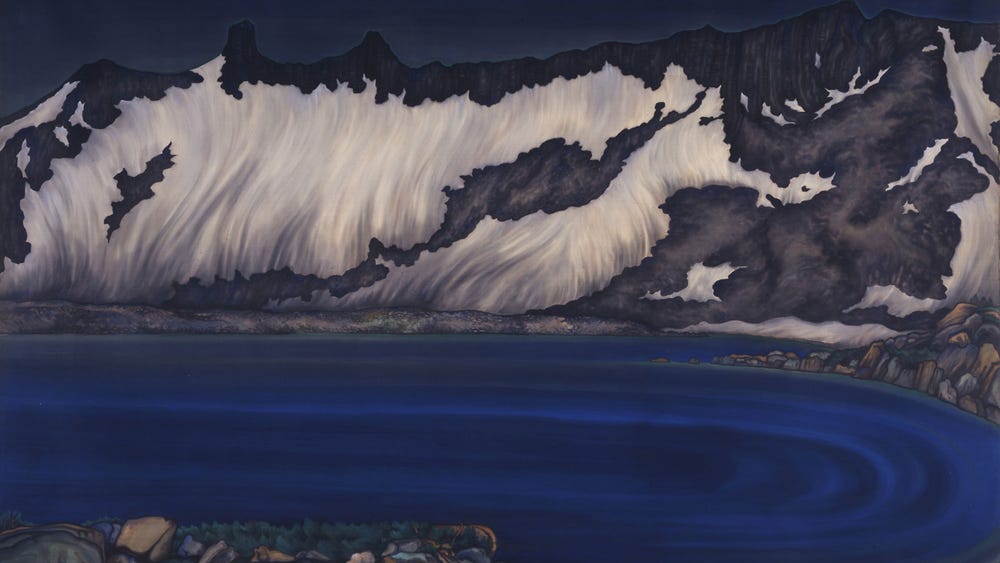Chiura Obata, Lake Basin in the High Sierra (detail), ca. 1930. Ink and color on silk mounted on paper, 69 1/2 x 102 1/2 in. (176.5 x 260.4 cm). Fine Arts Museums of San Francisco, Museum purchase, Dr. Leland A. and Gladys K. Barber Fund, 2000.71.1
About American art
The American art collections at the Fine Arts Museums of San Francisco span four centuries and include paintings, sculptures, and decorative arts. These compelling works were created by artists of Native ancestry, early European colonists, forcibly enslaved Africans and their descendants, and immigrants and their succeeding generations. The distinctive visions of these artists represent the multifaceted nature of the American experience. They have created, borrowed, and adapted an extraordinary range of cultural concepts and visual styles. Reflecting both personal and collective concerns, they have helped shape the evolving definitions of what it means to identify as American. The resulting cross-cultural works distinguish the art created in the United States.
The diversity and complexity of American art reveals that Americans have never shared a single set of values. The substantial representation of objects from the northeast—especially from New York City, the historical cultural capital—is counterbalanced by the art made in California. California’s counterculture movements have frequently challenged national calls for conformity and paved the way for significant societal change. The state’s cultural ties to Asia and the Americas, sensitivity to environmental issues, and histories of migration also have heightened awareness that Americans belong to an increasingly global community.
The American art collections are interpreted within historical, cultural, social, political, and economic contexts that often reveal the disparities between the nation’s ideals and its often problematic realities. Juxtapositions of older and newer objects reveal connections between the past and the present, underscoring the relevance of historical objects for contemporary viewers. Changing perceptions of these objects make it possible to view the American art collections as an impermanent gathering of ideas that are continually reinterpreted. This display provides a public forum—a gathering place for people, art, and ideas that have their roots in history, flourish in the present, and will continue to grow in the future.
